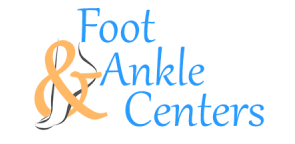5 Most Common Sports Injuries and How to Prevent Them
Sports injuries are inevitable. Whether you're an elite athlete with extensive training or someone who enjoys sports on the weekends, the risk of injury is ever-present. Regrettably, when injuries do occur, identifying the specific issue and determining the appropriate treatment can be challenging.
We have compiled a list of the most prevalent sports-related injuries, ranking them from the most to least common while also discussing potential causes, treatment options, and strategies for recovery.
1. Patellofemoral Syndrome
Among the multitude of injuries in sports, knee injuries are predominant, and one of the most common among them is known as patellofemoral syndrome. This condition can be triggered by incidents like slipping or falling onto the knees, knee joint swelling, or muscle imbalances.
The kneecap or patella is supposed to move within the groove at the end of the femur or thigh bone. This muscle imbalance can further intensify swelling, aggravating the tracking issue. For alleviating knee injury pain and swelling, it's recommended to rest and apply ice.
Your sports injury rehabilitation plan must include gentle isometric (static) strengthening exercises for the inner thigh muscles. It should also include gentle stretching routines for the lateral or outer thigh muscles and can aid in rectifying the muscle imbalance.
If knee pain or dysfunction persists for over two weeks, consulting a physical therapist is advisable. A physical therapist can provide more comprehensive stretching and strengthening regimens and may utilize techniques like knee taping or bracing to promote proper kneecap tracking.
2. Golf or Tennis Elbow
This condition is often observed in athletes who engage in repetitive gripping activities. These conditions, medial or lateral epicondylitis, are categorized as overuse worst sports injuries.
The repetitive movements involved in these activities can lead to forearm tendon inflammation, resulting in intense pain during any wrist or hand motions. Athletes experiencing these conditions report a loss of grip strength.
Initial treatment for tennis or golf elbow typically includes rest and applying ice to the inflamed area. Physicians may also prescribe anti-inflammatory medications or recommend using a brace to alleviate pressure on the affected area and prevent further elbow injuries.
Occupational or physical therapists can play a valuable role in the recovery process by implementing stretching techniques and strengthening exercises, which gradually reduce stiffness and restore strength. This approach aids athletes in returning to their sporting activities and pre-sports injury condition.
3. Sciatica
Sciatica is a condition characterized by back pain that extends down the back of the leg and, in some cases, even reaches the feet. This radiating pain is often accompanied by sensations of numbness, burning, and tingling along the affected leg.
Athletes who frequently maintain a flexed forward posture, such as cyclists or those involved in swing sports like golf and tennis, may be susceptible to sciatica. The origin of this back pain and radiating discomfort can be traced to issues like a bulging disc or a pinched nerve.
In some cases, simple measures like rest, back and hamstring stretching, and lying on your stomach can help alleviate sciatica symptoms. Check with a sports injury chiropractor if you can.
However, if the tingling, numbness, or pain persists for over two weeks, the athlete should seek professional medical assistance, such as consulting a physical therapist.
They can provide guidance and therapies aimed at relieving the symptoms and facilitating recovery from sciatica.
4. Groin Pull (Groin Strain)
A groin pull, often referred to as a groin strain, involves the muscles that extend from the upper inner thigh down to the inner thigh just above the knee.
These groin muscles are crucial in bringing the legs together and are prone to injury during quick side-to-side movements or insufficient flexibility.
According to a sports injury clinic, athletes who sustain a groin pull may experience challenges with lateral movements, entering and exiting vehicles, and may notice tenderness or bruising in the groin or inner thigh area.
Treatment for a groin pull typically starts with rest and intermittent icing for 15 to 20 minutes during the initial 72 hours after the injury. Beyond the first three days, the athlete may transition to using heat for 15 to 20 minutes periodically.
It can be followed by gentle and appropriate groin stretching and range of motion exercises, such as floor-based movements akin to making snow angels. These measures aim to facilitate recovery and restore normal functionality in the affected area.
5. Hip Flexor Strain
One of the worst injuries in sports is hip flexor strain. Hip flexor muscles, located on the upper front side of your thigh, play a crucial role in raising the knee towards your torso and facilitating leg movement in various directions. Prolonged sitting at work or poor sitting posture can lead to hip flexors weakness and stiffness.
Sports-related injuries to this muscle group are often associated with sprinting, running on inclines, and sudden movements involving quick starts and turns. Initial treatment for a hip flexor strain involves icing and rest for at least 15 to 20 minutes within the first 48 to 72 hours.
Following the initial three days of sports injury rehabilitation and recovery, individuals with this injury can transition to applying heat for 15 to 20 minutes, coupled with gentle heel slides and hip flexor stretches.
Free Yourself from Foot Pain and Injuries
Are you suffering from foot discomfort or pain? Don't let it hinder your active lifestyle any longer. Visit Foot and Ankle Centers, where our experienced foot doctors offer the best foot remedies.
We understand the importance of healthy, pain-free feet, and we're here to help you regain your mobility and comfort after sports injuries. Whether you're dealing with chronic issues or recent injuries, our experts have the knowledge and expertise to offer the best foot pain solutions for your unique needs.
Call Foot and Ankle Centers and step into a brighter, pain-free future.


